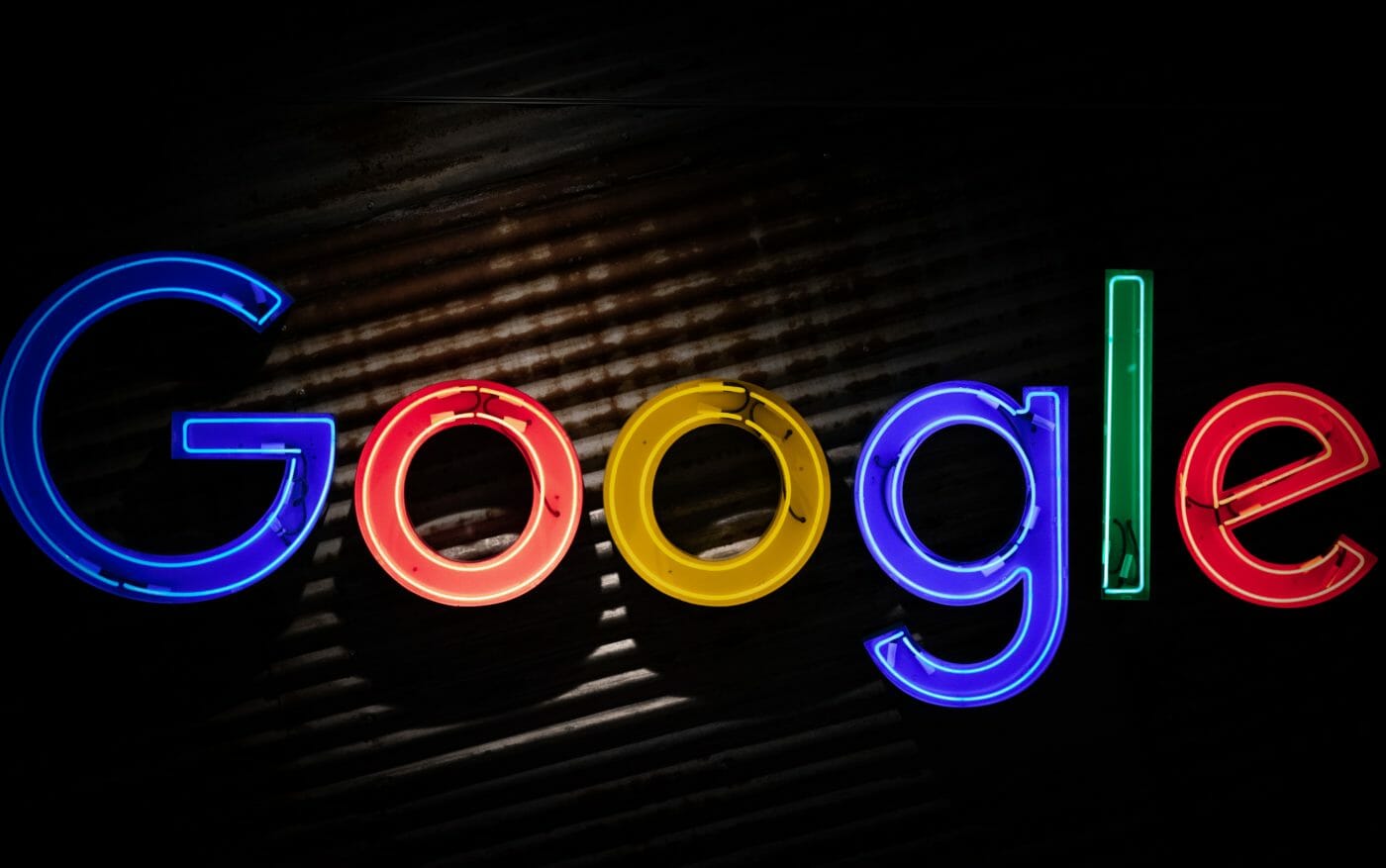Two of the most dominant advertising companies both in Europe and here in the US are Alphabet and Facebook. Both companies generate a significant amount of their revenue from advertisement (advertisement accounted for 98% of Facebooks revenue in the third quarter while Google makes roughly 85% from their ad business which sells links, banners, and commercials across its own websites and apps).
A fast growing, highly profitable market
The global digital ad market has been increasing steadily. Today, Alphabet and Facebook together get roughly 60% of all digital advertising revenue in the US. That’s massive! The insane dominance of Alphabet (& YouTube) and Facebook (& Instagram and WhatsApp) is greatly illustrated in this infographic by Nick Routley and the visual capitalist:
YouTube and Instagram were fantastic acquisitions
Let’s focus on YouTube and Facebook for a moment. Alphabet has benefited greatly from its acquisition of YouTube more than a decade ago and created, besides google search, a dominant digital ad machine. A similar smart move was Facebooks acquisition of Instagram for roughly $1 billion in 2012. If you are a regular YouTube user as I am, you have probably experienced it: depending on what videos or content you watch, you get user defined ads. The huge advantage for YouTube or Facebook is, that they know their users. Based on your likes, preferences and subscriptions, they suggest new content to you with corresponding ads which are targeting you. This is a huge advantage over traditional tv advertising.

In addition, millennials are switching more and more from traditional TV to YouTube and spend more time on Facebook, WhatsApp and especially Instagram. As Amazon owns E-Commerce, so does Facebook own Social Media. And Alphabet owns the most popular video internet platform with more than 2 billion monthly users (namely YouTube) among 5 other business units with more than 1 billion users each: Google, Android, Google Maps, Google Play and Google Chrome.
How advertising works on YouTube
Back to YouTube. Advertisers usually use YouTube’s auction platform to buy advertising. These ads are running down to a certain video or channel and whatever revenue is generated by that goes back to the publisher. In general, YouTube gets $ .45 on the dollar and $ .55 goes to the content creator (what a great margin!).
The cost of YouTube ads is measured in a unit called CPM (cost per mille) which means cost per thousands (“mille” is French and stands for “thousand”). Beauty and luxury categories have a relatively high CPM whereas other categories have a lower CPM. “Genres” such as gaming are cheaper because its more specified and broader.
Another big advantage is that users of Facebook and YouTube create the content (whereas streaming platforms such as Netflix must provide it). That saves a lot of time and money.
In fact, YouTube is increasingly focusing on higher content on its platform. In January Google announced that it will broadcast some of the biggest e-sport leagues from Activision Blizzard, such as Call of Duty. Strategically, the deal makes perfect sense considering that YouTube has been a major destination for watching people play video games. A market worth around $120 billion!
Recently, YouTube started a platform called Google Preferred which -according to Google – “aggregates YouTube’s top content, into easy-to-buy packages for brand advertisers”. Top content usually means the top 5% or 10% of any channel in a certain category. Therefore, advertisers know that their ads are going to run against more premium channels and content, from people that are more well-known.
Just like big tv companies, Google want to get big advertisers to do upfront commitments where you pitch a popular channel to advertisers to commit buying against them. Therefore, they can charge a significantly higher CPM for preferred advertisers with channels that do very well. For a great channel YouTube charges content creator (e.g. MSNBC, CNBC, FOX all have their own channel) and give them sales rights in exchange. If CNBC can sell that to somebody for a higher price, they can keep that profit. This represents another way how big publisher make a significant amount of money on the YouTube platform. By doing that, YouTube becomes even more content creator friendly to ensure they can offer more premium content to charge more.
Facebook and its role in the 2020 presidential election
Facebook works similar. With more than 2 billion monthly active users, they can charge a lot for the possibility of a high attention rate for ads. Like YouTube, Facebook is heavily investing into more premium video content to get CPMs to YouTube like standards. Whereas YouTube is clearly a video platform, Facebook is pushing into that category as well.
A big asset for Facebook ads is also, that advertisers can get a lot of information about how their content does and the engagement it gets, so that they can continuously optimize the processes, the content production, and the distribution. This is especially crucial for political campaigns.
With an election year ahead in the US, the prospects for Facebook are getting even better considering Twitters ban on political ads. I would expect political ad spending to be even higher in 2020 compared to 2016. Democratic candidate Michael Bloomberg alone spent $400 million on advertising so far. A big chunk of that goes to digital advertisers specifically to Facebook and YouTube. Although Facebook estimates the impact of political ads to be only 0.5% of their total revenue in 2020 (defending their decision with free speech claims) it creates room for positive surprises cause all campaign managers heavily rely on Facebooks platforms for political ads.

Facebooks fight on fake news and propaganda
The social media giant wants to combat misleading content however to make its platform more reliable. Currently Facebook is using AI tools to track so called “deep fake videos”. While Facebook already invested heavily in AI tools and additional labor to track fake news and propaganda, these additional investments also help the social media giant to better understand the content of its users and therefore, to better place ads. This could further enhance revenue in the future. Of course, that’s not what Facebook officials will tell you why they do it. It sounds better to sell it as investments that will improve the safety and reliability. Just very recently, Facebook announced that it is adding a further 1,000 jobs in the U.K. this year, bringing the total to over 4,000 with a key focus on tracking and handling of toxic content on the platform.
Google’s and Facebook’s moat
In addition, there’s a lot of user stickiness to these platforms. If you have used Google, YouTube or Facebook and Instagram, it’s unlikely that you switch to a different platform (switching to what as an alternative??). Even after the Cambridge Analytica scandal in early 2018, where personal user data of millions of people was misused for a political campaign, and following popular outrage, almost no one deleted his or her account and the active users and traffic has actually increased further.
Both Facebook and Alphabet want to use their huge traffic and decided to pay publishers directly for higher quality news. Google is in talks with publishers while Facebook has already announced similar plans last year to ultimately create an own news product or to license headlines and story summaries to create an own news service. These licensing deals would bring more quality news to both Facebook’s ecosystem and Google’s search results. This move would also bring peace in the heated debate between publishers and the tech giants who suck up most of the ad revenues. It could indeed turn out to be a win-win-situation for both counterparties.
Overall, Facebook and YouTube are fantastic platforms for companies and advertisers to scale and gain attention.
And beyond that, a global trend is giving Alphabet and Facebook a lot of tailwind: as the 2nd half of the world (lower income countries like India, Africa and Latin America) is adopting smartphones, more and more people will get into the Alphabet and Facebook ecosystem, using mainly Google’s Android on their phones (and not Apple’s IOS) and are getting an account on Facebook. By geography, “Asia Pacific” and “Rest of the World” are already the big growth drivers for Facebook in terms of daily active users (DAUs) and monthly active users (MAUs). The wealthier these countries will get, the more important the users will be for advertisers.
But what does this mean for investors who want to take advantage of all that. Generally, stocks follow earnings in the long term. Google’s revenue and earnings still grow around 20% each year and Facebook grows with mid to high 20% year-over-year. Even if these numbers will slow down over time, expect the stocks to follow the operating-growth at a similar pace. Former Google CEO and newly Alphabet CEO Sundar Pichai seems confident since his compensation plan ties the stock vesting period to the stock’s relative performance. Even after years of high growth, it seems Google’s and Facebook’s growth story isn’t about to end (yet). Investors are well advised to take advantage of that.
Disclaimer: Moritz owns stocks of Alphabet and Facebook. Take care of our disclaimer.
Picture sources: Google by Mitchell Luo on Unsplash – Facebook by NeONBRAND on Unsplash


